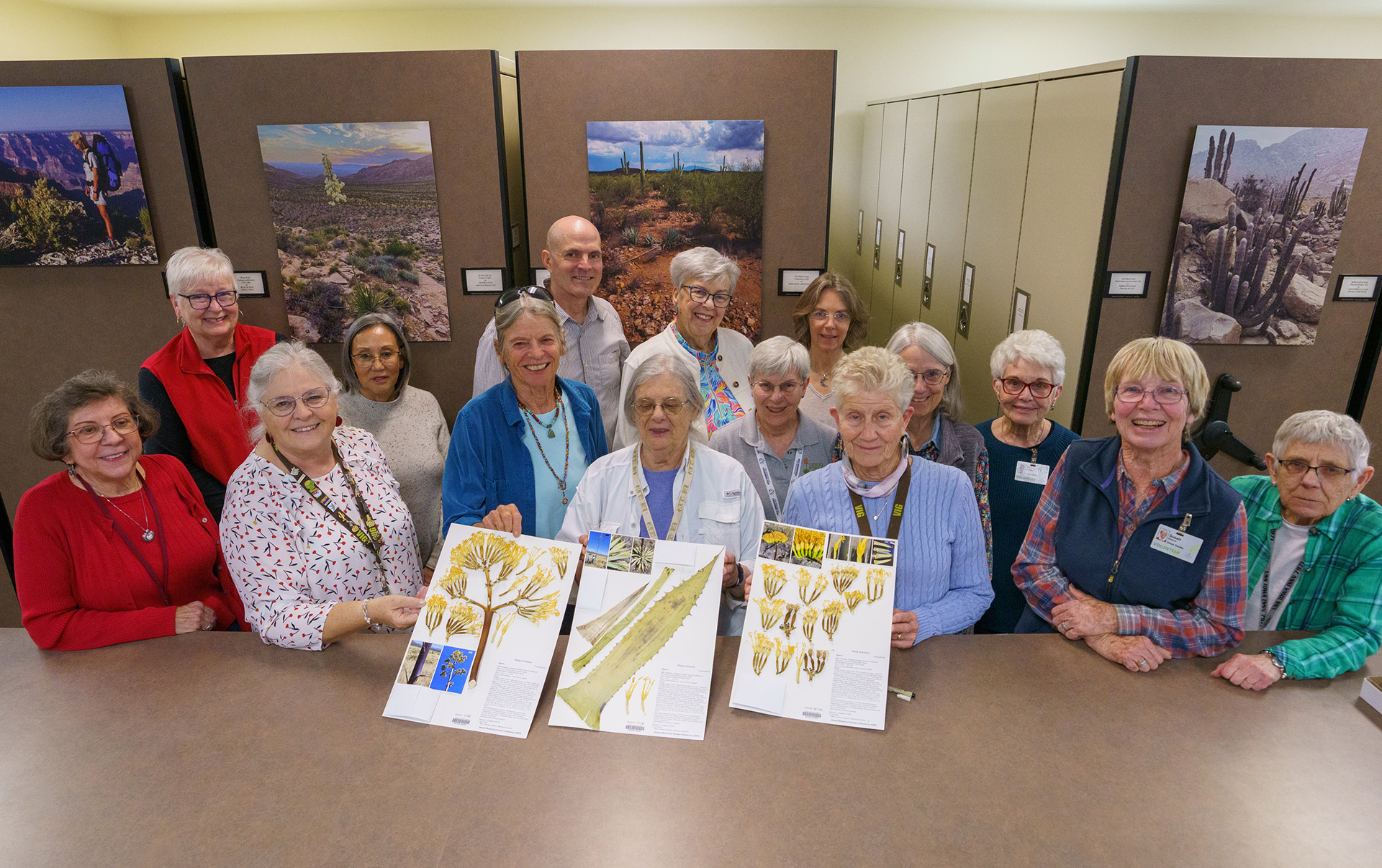Desert Botanical Garden’s historic collection of plant specimens reached a milestone on Feb. 12. Staff and volunteers at The Lois Porter Earle Herbarium recorded data on the 100,000 specimen into its collection database system.
The specimen is an agave that was collected in Arizona by Garden Senior Research Botanist and Herbarium Curator Emerita Wendy Hodgson, Andrew Salywon and Mariana Acevedo. Garden researchers are determining if the specimen is a new taxon, as it appears to be distinct from other agaves in the collection. This is the 33,795 specimen that Hodgson has collected over her 51 years as a botanist at the Garden.
This marks an incredible feat for the Garden. Over the years, staff and volunteers have contributed to this achievement. The Garden’s herbarium boasts a comprehensive collection of Arizona flora, agaves and cactus that has become an invaluable resource to researchers and other professionals. Access to specimen data is free via the Southwest Environmental Information Network, or SEINet, an online database of various herbaria in the Southwest.
The herbarium is a natural history collection of pressed, dried plants that are used for a multitude of purposes including basic and applied science.
Herbarium specimens have become even more indispensable over the years, as novel uses for them and their data emerge to address questions related to rare plants, ecology, evolution, conservation, land management and global change.
While the Garden has always collected and housed herbarium specimens since its founding, it wasn’t until 1970 that dedicated space, storage cabinets and staffing allowed the collections to really grow.
Herbarium staff and about 15 volunteers have continued to expand the collection by adding about 3,000 new specimens each year since 2010.
Nearly 100% of the herbarium specimens in the collection are databased, 99% are georeferenced (i.e., they have map coordinates), and 92% have high-resolution digital images.
The Garden is committed to building one of the best herbarium collections in support of its mission and is thrilled to have reached the milestone of reaching 100,000 specimens in its collection.





